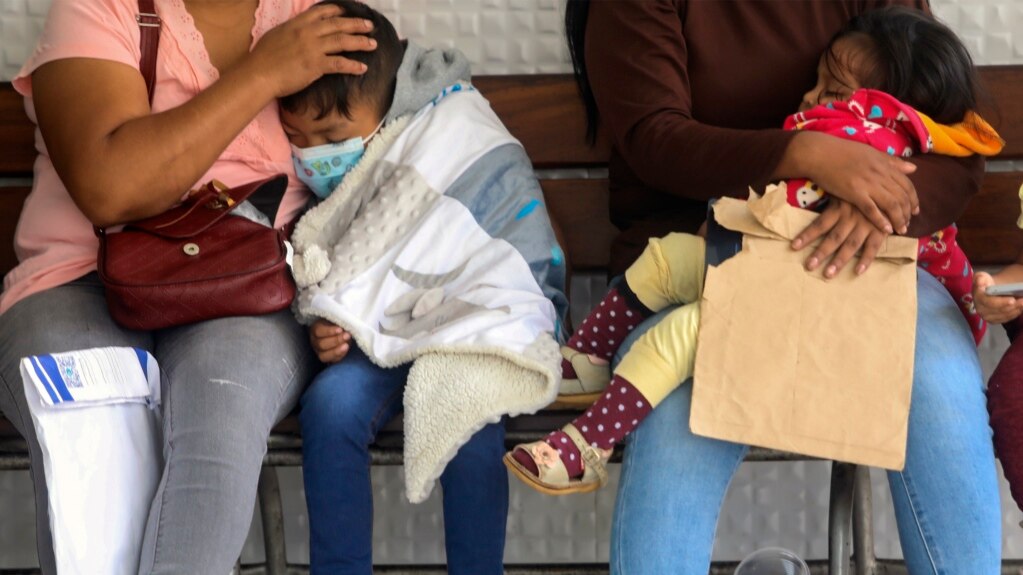The disease dengue is spreading across the Western Hemisphere in numbers not seen since record-keeping began in 1980. Experts are warning that rising temperatures and growing cities are increasing the rate of infection.
More than 4 million cases have been reported throughout the Americas and the Caribbean so far this year, breaking a record set in 2019. Officials from the Bahamas to Brazil are warning of crowded health centers and new infections daily. Reports say there have been more than 2,000 deaths across the wide area.
Thais dos Santos is with the Pan American Health Organization, the area office of the World Health Organization (WHO) in the Americas. She said diseases like dengue, “provide us a really good sentinel of what is happening with climate change."
A lack of good sanitation and strong health systems have added to the rise in cases. But experts say droughts and floods linked to climate change are causing greater spread of the virus. That is because stored water and heavy rains appeal to mosquitoes.
Dr. Gabriela Paz-Bailey is chief of the dengue branch for the U.S. Centers for Disease Control and Prevention in Puerto Rico. She noted that higher temperatures also are expanding the mosquito's habitat and helping the virus develop faster inside the mosquito. That leads to higher viral loads and a higher chance of transmission.
This year’s Northern Hemisphere summer was the hottest ever, with August about 1.5 degrees Celsius warmer than pre-industrial period averages. And Copernicus, the European climate service, reported that 2023 is the second hottest year on record.
Worldwide, more than 4.5 million cases of dengue had been reported as of early November. There have been more than 4,000 deaths reported in 80 countries.
Countries like Bangladesh are seeing a record number of cases and deaths. The government in the South Asian country has reported more than 313,700 cases and more than 1,600 deaths. Most of the deaths happened within three days of hospitalization.
The mosquito that carries dengue also has been identified in 22 European countries, with local spread of the disease seen in France, Italy and Spain. In August, the central African country of Chad reported its first dengue outbreak in history.
Dengue affects some 129 countries, with roughly half the world’s population at risk, says the WHO. Infected female mosquitoes pass the virus when they feed on animals. The sickness can cause severe headaches, fever, vomiting, rash and other signs. While most infected people do not get symptoms, severe cases can lead to plasma leakage and death.
What is worse, experts say, repeated infections means a higher risk of developing severe dengue.
The Caribbean also is battling an increase in cases. The area had reported a 15 percent increase in confirmed cases by early October compared with the same period last year, says the Caribbean Public Health Agency.
Officials on the French Caribbean islands of Guadeloupe and Martinique declared an epidemic in August that is still ongoing. Martinique is reporting an average of 800 cases a week on the island of some 394,000 people.
Meanwhile, Jamaica and the Bahamas declared an outbreak in September followed by Barbados in October.
Poor countries struggle the most with dengue. Bad sanitation creates a good reproduction environment for infected mosquitoes. Poor housing conditions leave people at greater risk of exposure to mosquitoes. Dengue outbreaks can crush already poor and overworked health systems.
Jeremy Farra is chief scientist for the WHO. He said dengue is very difficult to treat partly because patients often delay in seeking medical care. The virus can progress so quickly, he said. Treating those with the disease requires very close patient supervision and a lot of time.
Farra said, “Imagine that you have a thousand people like that requiring all that delicate clinical care. It can very quickly overwhelm a system.”
I’m Dan Novak.

